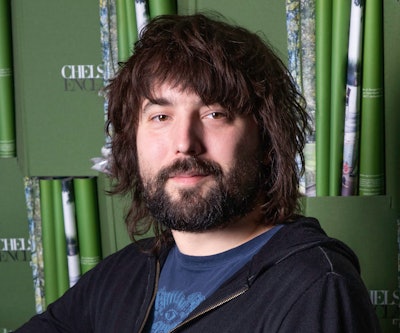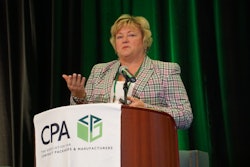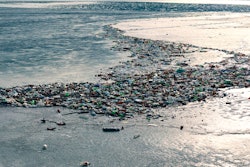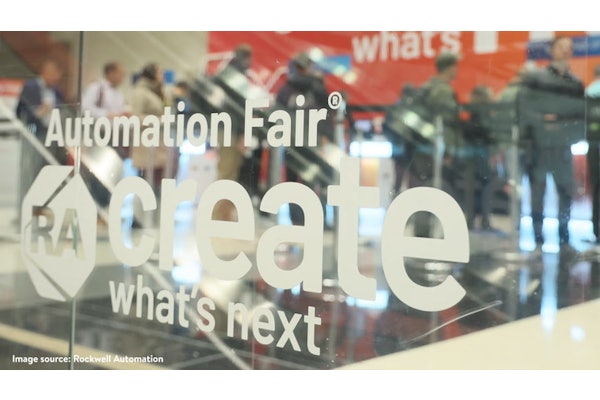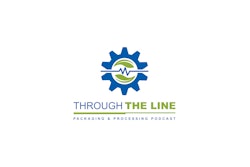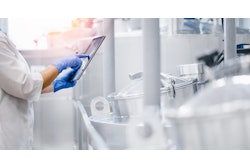Packaging World:
What progress have you seen with Loop since it launched last year in New York and in Paris?
Tom Szaky:
As you know, in May [2019], we launched in Paris with Carrefour and in the Northeast of the U.S. with Kroger and Walgreens. Those tests have gone incredibly well. The punchline is that all the retailers we’re working with are now working on going in-store. Carrefour will be the first retailer to put Loop in-store, which means really the retailer sells it [products in reusable packaging] in their physical stores, and there will be collection bins for the packaging at the store. Carrefour is going into stores starting in July, then 10 more stores in September, and then a much larger number at the end of the year. Kroger will be going in all Portland stores around September/October, and then more stores will follow. Walgreens too is making plans to go in-store in the Northeast. That has been a huge thing.
Brands have been joining consistently and continue to join aggressively. We’re seeing really good rates of brands joining—on average, a brand every two days. We are also on track to be launching in Canada with Loblaw, in the U.K. with Tesco, with AEON in Japan, and with Woolworths in Australia, all in the next 12 months. I’d say it’s just off to the races, and we’re thrilled so far. It’s continuing, and it’s accelerating, even within the context of COVID. Actually, March will be the best-performing month to date so far.
What have you learned through the pilot?
The two biggest lessons by far are related to the three major stakeholders—manufacturers, retailers, and consumers—and then Loop as a fourth stakeholder. And what I’ve learned is that while they all see the benefits of reuse, they really want to try to make it as similar to disposability as possible. And noting that many other reuse models diverge from the concept of disposability, what has really resonated for brands is that they simply fill packages—the packages just happen to be durable versus disposable. Retailers just order the packaging in pallets and put it on their shelf, which is a very similar experience versus things that may be more disruptive in reusables, like refill stations. Then consumers just get to buy products and throw the packaging away—they just happen to be throwing it into a reuse bin, per se. That’s one thing: The desire of all stakeholders to have the convenience of disposable models is very, very high.
Another key thing is we found that shifting from disposability to reusability does bring a major sustainability benefit, but what has been interesting to learn is that what consumers like even more is how beautiful the packages have become, and that packaging beauty has also been a very big driver we didn’t expect before.
I’m surprised to hear you say that March will be your biggest month so far, given that companies like Starbucks are banning reusable cups and some retail stores are banning reusable bags because of a fear of contamination with the virus. How do you think Loop has continued to thrive?
It’s a very interesting question. I’ll give you the answer in two ways, if I may. The first is that you mentioned Starbucks, and yes, Starbucks has famously stopped accepting reusable coffee cups, and I think frankly, they made absolutely the right decision. And they did that I think because of three main things that are very different in an informal reuse system where a consumer is giving a cup to a barista versus a professional reuse system.
In the Starbucks example, there are three things that are very different. One is there’s no dwell time. I could be an infected person giving my cup to a barista, and I’m giving it to them right away. There’s not a single second of dwell time. And there are many reports that show the virus can last maybe up to three days on the surface... . The second is that the barista does not have proper health and safety support, training equipment, or anything like that. They’re just a normal person in normal clothes. And then third, they’re not even cleaning the cup at all. So there’s no cleaning, no health and safety protocol, and no dwell time.
In the professional reuse system, whether that’s Loop or whether that’s a Canadian beer [bottle] or Germany with beverage [bottles], which are all examples of very big national reuse systems, all three of those things are at play. There’s strong dwell time. We typically will take about a month before the package is clean. Two, there are major health and safety protocols because that was always a big concern, and we’re really pleased that our health and safety is so strong that nothing had to be upgraded once COVID came out. We were already thinking about really important health and safety measures. So all the team members who do cleaning are in full-body personal protective equipment. And that’s been the case even before COVID. The packaging is also cleaned in a proper cleanroom versus not even being cleaned, or maybe how a bar would clean your beer cup, with just a spray of water, or even like a restaurant doing it in the back of their kitchen. There’s an actual cleanroom environment. And then the third is that it’s being cleaned at very high standards with really sophisticated chemistry and technology.
See related stories on Loop from Packaging World:
“Global CPGs Embrace Transformative Loop Circular Shopping Platform”
“Stars Align for Loop Launch”
“Loop complements Mondelēz’s waste-reduction strategies”
“Loblaw announced as first Loop retail partner in Canada”
There’s a huge difference within reuse of how one reuses and what systems and measures are behind the scenes. And what’s been interesting is that with COVID, it’s still not even in the top-10 questions we get on customer service in any of the Loop deployment. Where I do get a lot of questions on reuse is in fact only from the members of the media. I say this with a smile and a joke, but I totally understand why you’re asking the question. But it’s interesting that it hasn’t come from the people participating.
Do you think the growth of Loop right now is due to the fact that consumers are able to get their products without having to go to a store? And, do you think trend will continue, even after COVID is resolved?
I definitely think that the growth is probably in some part linked to the general growth e-comm is having right now due to COVID—for sure. I don’t want to take entire credit that it’s just the platform, and I think the macroeconomic trends and how we are consuming are absolutely playing into it.
The positive tailwind and just the general shift in consumption to online is definitely supporting the deployments we have of Loop today, which are mostly online. But do note that all the deployments coming up of Loop are in-store deployments. So we’re not necessarily an online play, we just happened to start online, and I think that’s an important distinction. But yes, today we’re seeing some nice tailwind just because of the way the models are set up today.
I do think there’s this general question around the health and safety of reuse, as you just asked. And my hope is—so far so good—that people see the distinction in different reuse models, and that they’re not all the same. There’s a big difference between the systems behind them and how they operate. And during a COVID-type moment, which ones people should maybe temporarily stop using. Starbucks is a great example, and I really commend them for pausing. And really temporarily, by the way, I think it should come back after COVID is over. And then let’s see how much our life changes or not. There’s every sort of assumption.
How much will we learn from this and how much will we change is unknown. I really hope, frankly, that we take a reflection that by slowing down the gears of the economy, the planet has improved greatly, from a pollution point of view. I have a funny feeling though, we won’t. We will simply try to work even harder to make up the time and revenue many companies have lost during this time.
One thing I’ve seen with COVID is a lot of environmental groups saying that consumer brands are using it as an excuse to extol the benefits of single-use packaging, and that it will undo all the progress these groups have made. Do you think that’s true?
Look, I think that I would answer it this way. I think that just like we commented, hopefully the world will reflect that slowing down the economy has made the world better from a climate change point of view and a pollution point of view. I’m sure you’ve seen lots of examples. I’ve seen a lot on my social media that are giving really objective feedback. Look at Italy before COVID, and the amount of emissions it was making during COVID is significantly down, and let’s see if people reflect on that. But that will be COVID creating an environmental improvement.
I think on the other side, we are going to wake up to a heightened waste crisis, because people have been now purchasing way more disposable packaging, partly because we shifted our consumption say, away from restaurants and even more into packaged foods, and we will see a general increase in the waste crisis when this is over.
I think that’s what we’re going to wake up to post-COVID: A better climate, but a worse environment from a waste point of view. And I think people will understand that it’s not the difference between disposable or reusable. Good packaging has good benefits. There’s really badly designed disposable packaging, and there’s really badly designed reusable, and vice versa. There is incredibly designed reusable packaging, and there’s incredibly designed disposable packaging. I think we shouldn’t necessarily link single-use versus multi-use to whether it’s well designed or badly designed.
With the right systems in place, durable packaging can be more sterile or more clean than disposable packaging. Disposable packaging does have acceptable level of microorganisms on it.
Yet when you go to a dentist office, and you get your teeth cleaned, they’re using metal tools that were used on hundreds of patients before you. And if they didn’t clean that to a surgically sterile state, that could be putting you at massive health and safety risk. Right? And we’re all totally fine with it.
Listen to these PMMI UnPACKed with PMMI podcasts on packaging suppliers’ operational best practices for dealing with the pandemic:
OEM Covid-19 Response #1: ProMach, Inc.
OEM Covid-19 Response #2: Pearson Packaging Systems
OEM Covid-19 Response #3: Polypack, Inc. & Garvey Corp.
OEM Covid-19 Response #4: Morrison Container & F.R. Drake
So this is this idea of single-use versus multi-use should be independently questioned from good design versus bad design, versus the cleanliness of the systems at play. They’re all independent concepts. I do understand completely why people link reusable to potentially greater risk, but I think it’s a misnomer. A disposable coffee cup sitting at Starbucks in an uncontrolled environment could collect a lot of dust and dirt and all sorts of other negatives.
So these are unrelated questions. I do again, understand, but it’s weird. I’ll give you an example of the weirdness. Before COVID got really crazy, as it was just beginning, I was in an airport lounge, and there was a tray of apples, and they set a sign next to it saying, “To protect your health, each apple has been individually wrapped in Saran Wrap.” And I chuckled to myself and I was like, “Wait a minute. Okay, it’s lovely that they’re wrapped, but were they washed? Who touched them, and how did they touch them? Or did they just basically have a dirty hand?” It was a pesticide-laden apple, just being wrapped in Saran Wrap to make it seem better. So I don’t know, but I had a chuckle on it. I think there’s this weird psychological effect that’s not based in reality. And this is why I think the most important thing as anyone evaluates anything is to think about what are the systems behind it.
And in a way, that’s where brands are very powerful. I trust, for example, that a Nestlé product has really good health and safety protocols behind it, just like someone who buys a Nestlé product on Loop should trust that Nestlé has evaluated the cleaning process and has signed off on it, or they wouldn’t put their brand on it. And not a single brand in Loop has asked us to do anything except continue to go.
Do you think a reusable packaging program like Algramo where consumers use the same package over and over again is more prone to contamination?
So here’s the difference. If you think about reuse systems, it all begins with a reusable package—a durable package. The real difference between any reusable system is not the package, but how the package is refilled. So I’d say Loop is a re-refill-for-you system. You throw it out, we pick it up, clean it, and then the manufacturer refills it, and it’s sold again. So let’s call Loop a re-refill-for-you system. We personally like it because it gives you the convenience of disposability. You can effectively feel disposable but act usable.
Now, Algramo, which is a wonderful company, is a you-refill-for-yourself system, which is basically, you take it to a refill station, and they have a unique twist that their refill station can be static, but can also be mobile. It can be on wheels. And the consumer is charged with taking their package, cleaning it as they wish, and using it at the refill station.
I think it’s important to note that they are not filling food products. They’re filling detergents, which have different health and safety protocols. I mean, they are literally cleaning agents. It’s not filling food. But one question that’s important to think about is what happens if a consumer who is sick—let’s just say with COVID or any other transmissible disease—is touching that package, and let’s say the virus or the bug can transmit onto the package, and what if the package then touches the refill station or any other aspect of it? And then a healthy person touches the refill station—maybe the walls of the refill station, it doesn’t have to be the nozzles, it could be any aspect of it—and it transmits?
And I would say that’s the same as what happens if I should walk into a supermarket, and a sick person who had just looked at buying a can of pickles decided not to buy it and put it back on the shelf, and I picked it up a minute later.
This is why Algramo is in no way different than a comparable example: If I’m sick and I evaluate a box of Cheerios and put them back, and you’re healthy and you pick it up a minute later. The same inherent risks are not more or less, right? So that would be my key answer. I think whether the consumer washes it themselves or not is not that relevant because the consumer is keeping the package for their own use.
I think what’s really important is if the package goes from consumer A to consumer B, from consumer B to consumer C, and then from consumer C to consumer D, like Loop, then having a very strong cleaning protocol is critical. And I would in no way trust the consumer to clean the package.
An example where I would be a bit more critical is there are a lot of reusable cup models where what they do is they have a float of coffee cups, let’s say between 10 coffee shops, and you can buy your coffee in a reusable cup, then you drop it off in a bin in the coffee shop, and then the coffee shop cleans it and then sells it again. Well in no way to disparage a coffee shop, I don’t trust a restaurant doing cleaning in a type of protocol that a big platform would. They would probably just throw it in their dishwasher. There wouldn’t be health and safety inspections, there wouldn’t be a cleanroom environment, which adds added health and safety.
It’d be kind of the same as a restaurant setting though, wouldn’t it?
It absolutely is. And during COVID, I would not eat in a restaurant and use reusable plates and forks. As soon as COVID is over, I would totally do it, because I don’t think we need to be as concerned post-COVID. Life was normal, and it worked just fine.
And again, I think this is where we have to distinguish between today’s environment and a normal environment, and not assume that post-COVID we don’t go back to a normal state. I mean, most of our activities are very communal, and we’re sharing a lot of our microbes.
